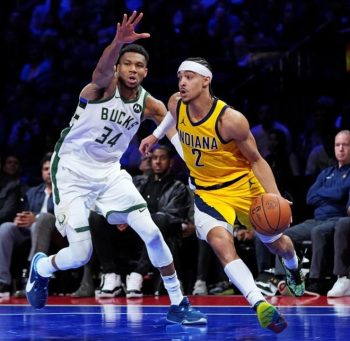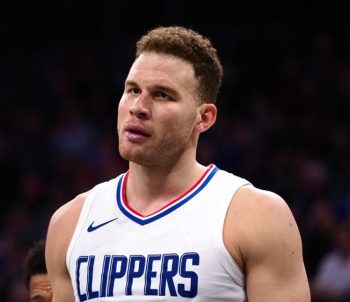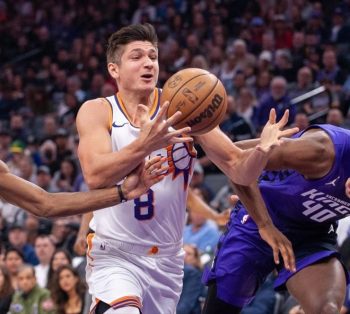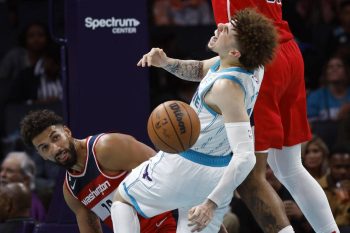NBA
NBA Daily: The Effects of Adding And Losing Tyson Chandler
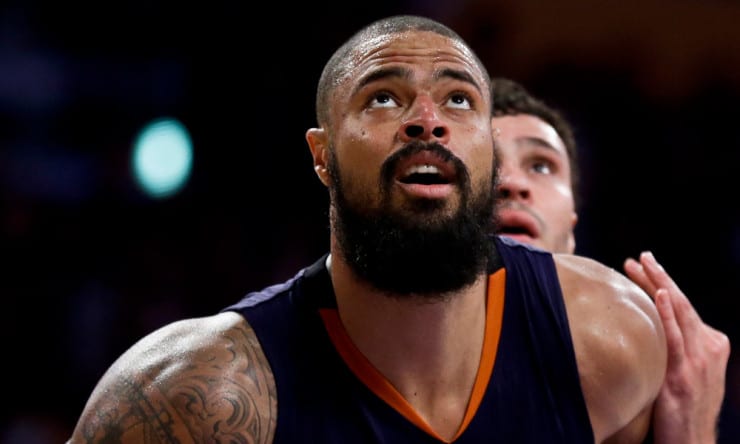
After we got our first coach movement of the season last week, we got our first player movement of the season this weekend.
After spending the last three-plus years with the Phoenix Suns, Tyson Chandler has been waived by the team and is expected to sign with the Los Angeles Lakers.
At 36 years old and having spent the last few years on a perennial bottom dweller, it’s hard to know how effective Chandler will be at this point for a playoff hopeful like the Lakers. Still, his move from the Grand Canyon State to Hollywood does let us peek into the mindset of both teams.
Phoenix Suns
This was the end of an era. Kind of.
Technically, Tyson Chandler is the last player who the Suns originally added in an attempt to win now before they opted for the rebuild. It’s sad since the Suns started their rebuild pretty much right after adding Chandler. Phoenix originally brought in the former defensive player of the year in hopes that he would lure LaMarcus Aldridge to join them, but to no avail.
Phoenix’s failure to acquire Aldridge made the. 32-year-old Chandler an awkward fit on a young roster that wasn’t built to win anything immediately. Phoenix valued the veteran influence Chandler had on some of their younger pieces, but it was clear that what Tyson brought to the basketball court was of little use to them.
Three years later, Phoenix cut the cord on its failed gamble. With Chandler gone, the Suns can now focus on the development their younger frontcourt players. Just to be clear, DeAndre Ayton isn’t one of them since he was already the starter and has so far lived up to the lofty expectations he had coming into this season. There are two specific young bigs on the Suns’ roster whose career could change for the better with Chandler gone.
First up is Richaun Holmes. Holmes hasn’t gotten much of a shot since entering the NBA. His only prolonged exposure came in his first two years when he played for the Philadelphia 76ers back when they were still tanking. Holmes then spent most of the games on the bench when the Sixers started winning, making him all the cheaper for Phoenix to acquire.
Holmes has shown flashes of being a productive big in the second unit. His athleticism makes him a golden candidate to make a highlight reel dunk or block on a nightly basis. His inconsistency, however, has prevented him from securing a spot in a rotation. In the very limited minutes he’s played this season, the Suns’ defense has proven to be better, as they allow 13.4 points per 100 possessions less when he is on the floor. That stat should be taken with a grain of salt, though, since Holmes has only played 50 minutes all season.
Since his contract expires after this season, Holmes must seize this opportunity if he wants to stay in the NBA.
The same goes for Phoenix’s other young big who could capitalize from Chandler – Dragan Bender.
The Suns knew Bender was a boom-or-bust prospect when they drafted him fourth overall. The young Croatian has shown flashes of the all-around skill set many thought he had, but they’ve come few and far between. In just two weeks, Bender will be 21, but it’s clear that the Suns have lost patience with him. The team has decided not to pick up his player option, making him an unrestricted free agent this summer. With Chandler gone, Bender, too, has the chance to prove he has a place in the NBA.
Again, Bender has had his moments. Particularly during last season. Last April, Bender averaged 13 points on 53 percent shooting, including 47 percent from three. Add in the 10.4 rebounds per game, and it would seem the Suns would be encouraged by his late-season somewhat surge. Since Bender’s little run came at a time when everything’s already pretty much been decided, it didn’t count for much.
With Chandler gone, Bender has a chance to follow in Mario Hezonja’s footsteps as a failed lottery pick who showed at least something before he left the team that drafted him. It’s too late for him to prove he was the right pick at number four for Phoenix, but that doesn’t mean he can’t blossom into a productive player.
Los Angeles Lakers
The Lakers believed they could go into the season with only one proven center on their roster. Surprising absolutely no one, they haven’t.
Now, Javale McGee has actually been impressive since taking the Lakers’ starting job at center. The man is averaging some of the best numbers he’s ever put up since coming into the NBA. Averaging 15.2 points, 7.7 rebounds, and 3.6 blocks a game on 64 percent shooting, the “Shaqtin’ a Fool” champion has garnered a lot of respect around the league. He also clearly impacts the Lakers’ defense, as the Lakers surrender 6.3 points per 100 possessions less with McGee on the court.
It’s blows the mind that McGee may wind up being one of the smarter additions made this summer. But it’s sad to say that he’s the only positive from who the Lakers have played at center.
Luke Walton has been forced to get creative with all his new toys. He’s tried to play Kyle Kuzma at the five, but the second-year player is clearly not meant for it. He’s given Ivica Zubac some burn, but not enough to convince spectators that Luke trusts the third-year player. If Tyson Chandler hadn’t become available, who knows what the Lakers’ plan would have been for their frontcourt?
It doesn’t matter now because Chandler has arrived. Expectations for Chandler aren’t high. The common belief is that his role in Hollywood will be to spell McGee off the bench so that the Lakers actually have a proven backup center in their second unit.
Unfortunately, Chandler hasn’t had an individual defensive rating below 107 since his second stint in Dallas, when it was 103. Also, according to net rating statistics, he hasn’t exactly helped his team’s defense.
The following stats are the Suns’ defensive ratings over the past three full seasons with Chandler both on and off the court.
-2015-2016: The Suns defensive rating was 107.1 when he was on the court, and 105.9 when he was off.
-2016-2017: The Suns defensive rating was 109.8 when he was on the court, and 110.3 when he was off.
-2017-2018: The Suns defensive rating was 109.9 when he was on the court, and 110.5 when he was off.
Those differences don’t make Chandler look like a scrub, but they definitely don’t make him look like a defensive powerhouse. In Chandler’s defense, he wasn’t exactly surrounded by the best defensive personnel in Phoenix. However, it’s not like the Lakers are in a much better place, as they are currently 20th in the league in defensive rating at 112.2.
Tyson Chandler is not what he once was, and he’s not going to single-handedly change everything, but he’s something. He’s better than what the Lakers have used because, frankly, they’ve had pretty much nothing to use since the season started.
Bringing in Tyson Chandler also signifies that this season is not going to be a step-by-step process for the Lakers. With LeBron James on your team, you can’t expect early season struggles to go on for too long before you start seeing some changes.
LeBron wants to win now while he’s still the King, so don’t be surprised if adding Tyson Chandler isn’t the Lakers’ only move this season.


